Bb2.4
Let's now try to join the strings of ideas (→)
together. My short excursion into the polar regions was prompted by
the 3 days following the Rain star (Matar) at the first
glyph in line Bb2. The pair of 'turtle flippers', facing each
other and flanking the
whirling top niu, had to be explained.

Hati 1. To
break (v.t., v.i.); figuratively: he hati te pou oka,
to die, of a hopu manu in the exercise of his office
(en route from Motu Nui to Orongo). 2. Closing
word of certain songs. Vanaga. Hahati. 1. To break
(see hati). 2. Roughly treated, broken (from physical
exertion: ku hahati á te hakari) 3. To take to the
sea: he hahati te vaka. Vanaga. Ha(ha)ti. To
strike, to break, to peel off bark; slip, cutting, breaking,
flow, wave (aati, ati, hahati); tai
hati, breakers, surf; tumu hatihati, weak in the
legs; hakahati, to persuade; hatipu, slate. P
Pau.: fati, to break. Mgv.: ati, hati,
to break, to smash. Mq.: fati, hati, id. Ta.:
fati, to rupture, to break, to conquer. Churchill.
When in the Golden Age of the Bull the Sun had reached Matar
(Bb2-1) this evidently took place in day 2 * 29½ = 59 (February 28, *344) + 183 (→
August 30, 242, *162 = *344 - *182) - 64 (precessional time depth measured from my
assumed rongorongo era AD 1842) = 242 - 64 = day 178 = 2 * 89 (JUNE 27).
Therefore, after
a few slight corrections my table of presentation will then
become:
 |
 |
 |
 |
 |
 |
 |
|
421 + 29 = 450 |
Bb1-30 (11 * 41) |
Bb1-31 (452) |
Bb2-1 (32) |
Bb2-2 (227 * 2) |
Bb2-3 (455) |
Bb2-4 (19 * 24) |
|
kukurutou
- kua mai ïa - ki to vero |
kua haga i te
mea ke |
e kua mea i te
mea ke |
Parei |
e
niu
- tapatu - kua hua ko te kava |
|
Tou.
In ancient times, a tou was
someone who had recovered from an
epidemic, but whose illness meant
that someone else in the family had
to die. The tou were regarded
as portents of evil. Toutou,
lush; fertile (land). Toûa:
Egg yolk; the colour yellow; soft,
fibrous part of tree bark; toûa
mahute, mahute fibres. Vanaga.
Toua: Wrath, anger, rage,
revenge, battle, combat, debate,
dispute, dissension, uprising,
revolt, quarrel, fight, hostility (taua);
toua rae, to provoke, rae
toua, to open hostilities,
toua kakai, to rebuke, tuki
toua, to stir up dissension;
totoua, hostility; hakatoua,
fighter, warrior. P Mgv.: toua,
war, battle. Mq.: toua, war,
dispute, quarrel. The form with o
is found only in these three
languages, taua is found in
the general migration, Rapanui is
the only speech which has both.
Toutou, fertile (tautau);
hakatoutou, to fertilize.
Mq.: taútaú, fertile.
Toùvae, to run; hakauruuru
toùvae, id.
Churchill.
Vero. To throw, to
hurl (a lance, a spear). This word
was also used with the particle
kua preposed: koía kua vero i
te matá, he is the one who threw
the obsidian [weapon]. Verovero,
to throw, to hurl repeatedly,
quickly (iterative of vero).
Vanaga. 1. Arrow, dart, harpoon,
lance, spear, nail, to lacerate, to
transpierce (veo). P Mgv.:
vero, to dart, to throw a lance,
the tail; verovero, ray,
beam, tentacle. Mq.: veó,
dart, lance, harpoon, tail, horn.
Ta.: vero, dart, lance. 2. To
turn over face down. 3. Ta.:
verovero, to twinkle like the
stars. Ha.: welowelo, the
light of a firebrand thrown into the
air. 4. Mq.: veo, tenth month
of the lunar year. Ha.: welo,
a month (about April). Churchill.
Sa.: velo, to cast a spear or
dart, to spear. To.: velo, to
dart. Fu.: velo, velosi,
to lance. Uvea: velo, to
cast; impulse, incitement. Niuē:
velo,
to throw a spear or dart. Ma.:
wero,
to stab, to pierce, to spear. Ta.:
vero,
to dart or throw a spear. Mg.:
vero,
to pierce, to lance. Mgv.:
vero,
to lance, to throw a spear. Mq.:
veo,
to lance, to throw a spear.
Churchill 2.
Pare. Half raw, badly
cooked. Parehaoga, food
prepared in the earth oven (umu
parehaoga) for a feast or for
people whose help is needed for some
work or for organizing a feast.
Parehe, piece, bit; to fall,
break into pieces. Parei,
dirty, to have a dirty face and
eyes, someone who gets up without
washing. Parera, sea bottom.
Vanaga. Ta.: Pare, a fort, a
place of refuge. Ma.: parepare,
a breastwork in a stockade. Mgv.:
Pare, a covering for the head.
Mq.: pae, id. Sa.: pale,
id. Ma.: pare, id. Churchill.
Parehe, to break, a crack.
Parei, 1. (paré), dressed
up. 2. To sparkle (of the eyes).
Parera, 1. A shallow, a reef. 2.
Deep water, profound, gulf;
parera tai, deep sea; tai
parera, high tide; hohonu
parera, fathomless, unsoundable.
3. To lead astray. Hakaparera,
to frighten, to scare. Pareu,
skirt, apron. Mgv., Mq., Ta.:
pareu, loincloth, apron. Pau.:
Parego, to drown oneself.
Ta.: paremo, drowned. Ma.:
paremo, id.
Tapa. 1. Side,
corner, edge; he-hakarere a
te tapa, to leave aside, to
abandon; a te tapa mata'u o
te haga, on the right-hand
side of the bay. 2. Tapa
mahute, piece of mahute
material; this term is very
common nowadays, but it seems
probable that it was borrowed
from the Tahitian in replacement
of parehe mahute. 3.
To recount the years, the
months; to recount happenings of
many years ago, in verses called
manu, in which a murderer
confided his crime to his
victim's relatives; the murderer
himself asked a brother or a
friend to compose those verses:
e tapa koe itooku manu,
compose my manu. The
expression tapa ite manu
was also used of a group of
people expressing the desire to
kill someone. 4. Tagata tapa
ta'u, according to
traditions, this term referred
to the scribes who recorded
births on the tablets. Vanaga.
1. Border, fringe, edge, groin,
cloth, clothing, dress, garment.
Tatapa, lateral, bank.
Tapatapa, edge. P Mgv.:
tapa, the edge of the bast
cloth, bast cloth in general.
Mq.: tapa, fringe, cloth.
2. To name, to mention, to
count, to calculate, to reckon,
to number, to figure up, to
recapitulate; tapa ki te igoa,
to take a census; tapa igoa,
list. Tatapa, to count,
to number, to reckon.
Tapatapa, to mention. P
Mgv.: tapa, to give a pet
name. Mq.: tapatapa, to
recite, to invoke; tatapa,
to take the name of some one, to
announce by name. Ta.: tapa,
to call by name. Churchill. Mq.:
Tapaau, coconut leaf
plaited to serve as a mat. Sa:
tapa'au, a coarse coconut
leaf mat. Tapatai, a
dweller on the strand. Ma.:
tapatai, beach. Churchill.
|
|
VISIBLE CLOSE TO THE FULL MOON: |
|
υ Oct. (341.0), α/91 Lac. (341.1),
HOMAN (Hero) = ζ Pegasi,
β Piscis Austrini (341.2), ν Tucanae
(341.5),
υ Aquarii
(341.9) |
η Aquarii
(342.1),
σ Gruis (342.4),
SITULA (Water-jar) = κ Aquarii
(342.7)
*301.0 = *342.4 - *41.4 |
ε Piscis Austrini (343.5), ο Pegasi,
β Gruis (343.8) |
ρ Gruis (344.0),
MATAR (Rain) = η Pegasi
(344.2), η Gruis (344.6), β Oct.
(344.7) |
λ Pegasi (345.0), ξ Pegasi (345.1),
ε Gruis (345.3), τ Aquarii (345.7),
ξ Oct. (345.8), μ Pegasi (345.9) |
ι Cephei (346.0), λ Aquarii, γ
Piscis Austrini, σ Pegasi (346.5) |
SCHEAT AQUARII = δ
Aquarii
(347.0),
ρ
Pegasi (347.2),
δ
Piscis Austrini (347.4),
FOMALHAUT (Mouth of the Fish) =
α
Piscis Austrini,
τ
Gruis (347.8)
*306.0 = *347.4 - *41.4 |
|
Febr 25 (421) |
26 (396 + 26) |
(31 + 27 = 58) |
28 (360 + 64) |
(360 + 65) |
(360 + 66) |
(360 + 67) |
|
INVISIBLY CLOSE TO THE SUN: |
|
Aug 27 (239) |
28 (422 - 182) |
29 (58 + 183) |
30 (242) |
31 |
Sept 1 |
2
(245) |
|
p Carinae (159.3) p Carinae (159.3) |
φ Hydrae (160.3) |
No star listed (161 →
φ) |
VATHORZ POSTERIOR = θ Carinae
(162.1),
PEREGRINI = μ Velorum,
η
Carinae
(162.6) |
ν Hydrae (163.1) |
No star listed (164)
ALTAIR (α
Aquilae) |
Wings-27
(Snake)
η
Octans (165.4),
ALKES (Shallow
Basin) =
α
Crateris
(165.6)
*124.0 = *165.4 - *41.4 |
|
Corresponding right ascension days
in the Golden Age of the Bull: |
|
X-MAS EVE |
(359 = 423 - 64) |
26 (177 + 183) |
27 |
28 |
29 (363) |
DEC 30 |
|
ST JOHN'S DAY |
25 (176) |
26 (6 * 29½) |
27 (2 * 29) |
28 |
29 (180) |
JUNE 30 |
The time for renewal was in high summer, when the Sun reached the
place of the dry
empty basin (Al-kes) with the Full Moon at Fom-al-Haut.

... Midsummer is the flowering season of the oak, which is the
tree of endurance and triumph, and like the ash is said to
'court the lightning flash'. Its roots are believed to extend as
deep underground as its branches rise in the air - Virgil
mentions this - which makes it emblematic of a god whose law
runs both in Heaven and in the Underworld ... The month, which
takes its name from Juppiter the oak-god, begins on June 10th
and ends of July 7th. Midway comes St. John's Day, June 24th,
the day on which the oak-king was sacrificially burned alive.
The Celtic year was divided into two halves with the second half
beginning in July, apparently after a seven-day wake, or funeral
feast, in the oak-king's honour ...


In day 175 (= 350 / 2) 'Father Light' (Jus Piter
→ Jupiter)
was turned over face down (vero). At the
opposite side of the year, in day 365 (= 175 + 190)
he would return again. In between his hooded tanist ruled,
the one who was responsible for the ash spear turning
the great 'fire' person in the sky into 'grey
ashes'.
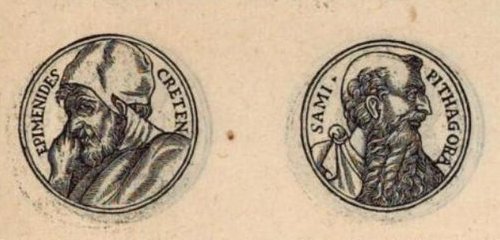
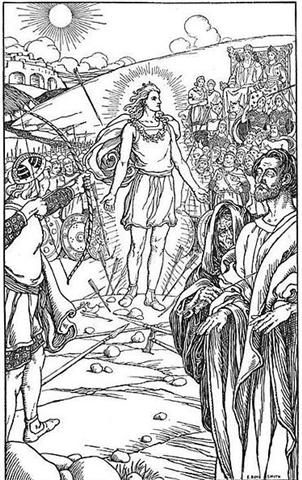
... The manner of his death can
be reconstructed from a variety of legends,
folk-customs and other religious survivals. At
mid-summer, at the end of a half-year reign,
Hercules is made drunk with mead and led into the
middle of a circle of twelve stones arranged around
an oak, in front of which stands an altar-stone; the
oak has been lopped until it is T-shaped. He is
bound to it with willow thongs in the 'five-fold
bond' which joins wrists, neck, and ankles together,
beaten by his comrades till he faints, then flayed,
blinded, castrated, impaled with a mistletoe stake,
and finally hacked into joints on the altar-stone.
His blood [vai-ku-ra] is caught in a basin
and used for sprinkling the whole tribe to make them
vigorous and fruitful. The joints are roasted at
twin fires of oak-loppings, kindled with sacred fire
preserved from a lightning-blasted oak or made by
twirling an alder- or cornel-wood fire-drill in an
oak log. The trunk is then uprooted and split into
faggots which are added to the flames. The twelve
merry-men rush in a wild figure-of-eight dance
around the fires, singing ecstatically and tearing
at the flesh with their teeth. The bloody remains
are burnt in the fire, all except the genitals and
the head. These are put into an alder-wood boat and
floated down the river to an islet; though the head
is sometimes cured with smoke and preserved for
oracular use. His tanist succeeds him and reigns for
the remainder of the year, when he is sacrificially
killed by a new Hercules
...

The Easter Islanders could easily have inherited
such a kind of
view from north of the equator and adapted it to their
local situation by observing
the face of the Full Moon in the night instead of
the position of the Sun. For they
could see Matar in February 28 (365 + 59 = 424 = 360
+ 64), which corresponded to day 424 - 64 = 360
(DECEMBER 26) in the Golden Age of the Bull.
The Chinese Green Serpent began with
the
South Dipper, and north of the equator they could
in December 30, 364, *284 (→ OCTOBER 27, 300 =
364 - 64 = 284 + 16)
see Φ in this asterism at the Full Moon,
i.e. 183 + 6 days
after the heliacal place of John the Baptist
in
June 24, 175, *95 (→ APRIL 21, 111 = 95 + 16).
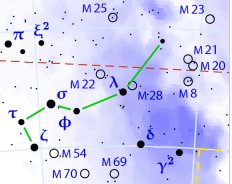
The
Unicorn (Monoceros) constellation had its
ε star in June 24:
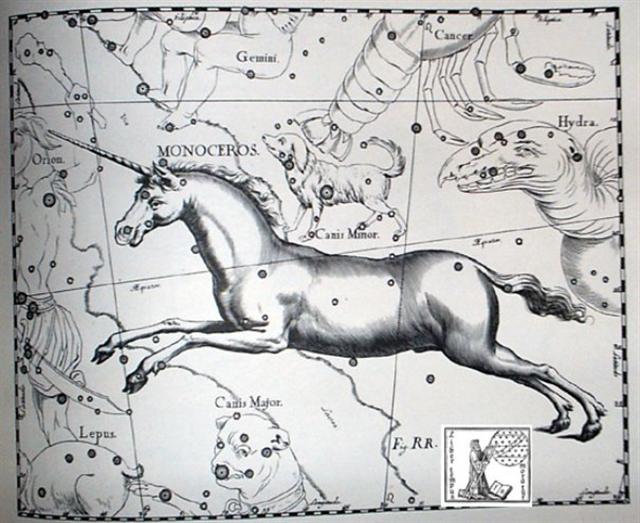
... That the Sun-gods Dionysus, Apollo and Mithras
were all also reputedly born at the Winter solstice
is well known, and the Christian Church first fixed
the Nativity feast of Jesus Christ at the same
season, in the year A.D. 273 [→ 3 * 91]. St.
Chrysostom, a century later, said that the intention
was that 'while the heathen were busied with their
profane rites the Christians might perform their
holy ones without disturbance', but justified the
date as suitable for one who was 'the Sun of
Righteousness' ...
|
Egyptian jubilation |
 |
Phoenician
he |
 |
Greek
epsilon |
Ε (ε) |
|
Wikipedia points at the
Egyptian gesture with arms held high as
a Sign of jubilation, which may have
been the origin (via Phoenician he)
of epsilon.

 |
And not far
later was the pair of left hand flippers of the Turtle. 364 (December
30) - 64 = 300 (OCTOBER 27
→ 270).
Since the time of the Bull the fixed stars had
moved ahead with 64 right ascension nights in the Sun calendar.


We can see the first left hand flipper of the
Turtle at the Girl, followed by the Emptiness
and the Rooftop stations, before the arrival
of the 2nd left hand
flipper at the House. This pair of left hand
flippers were equipped with 4 + 4 = 8 digits (and we
should notice the 3 digits of the hidden front right
hand flipper visible below the head of the Green
Serpent). A cube with a 'rooftop' measuring 4 * 4
will have a volume of 4 * 4 * 4 = 64.

... This
ancient
Square House, probably an early Sabaean temple,
was built, tradition says, first in heaven; then for
Adam on earth as a tabernacle of radiant clouds let
down by the angels directly under its celestial
site. This, disappearing at his death, was replaced
by one of stone and clay by the patriarch Seth, that
in its turn was swept away by the Deluge. Lastly it
was erected by Abraham and Ishmael to contain the
Black Stone, Al Hajar al Aswad, a ruby, or
jacinth, brought from heaven by Gabriel and now
blackened by the pilgrims' tears, or because so
often kissed by sinners; but it is generally
regarded by unbelievers as a meteorite. The
Century Cyclopedia, however, describes it as an
irregular oval about seven inches in diameter,
composed of about a dozen smaller stones of various
shapes and sizes. The Stone is set into the
northeast corner of the wall, at a convenient height
for kissing ...
Given the left back-hand-flipper of the Turtle was located
at the beginning of the Pegasus Square - at the
House - then the
Rat (February
9, *325)

... In China, with
Capricornus, Pisces, and a part of Sagittarius,
it [Aquarius] constituted the early Serpent, or
Turtle, Tien Yuen; and later was known as
Hiuen Ying, the Dark Warrior and Hero
[→ ζ
Pegasi], or Darkly
Flourishing One, the Hiuen Wu, or
Hiuen Heaou, of the Han dynasty, which
Dupuis gave as Hiven Mao. It was a symbol
of the emperor Tchoun Hin, in whose reign
was a great deluge; but after the Jesuits came
in it became Paou Ping, the Precious
Vase. It contained three of the sieu, and headed
the list of zodiac signs as the Rat,
which in the far East was the ideograph for
'water', and still so remains in the almanacs of
Central Asia, Cochin China, and Japan ...

ought to be 24 days
earlier at Bb1-13 in night number 429 (March
5, *349) = 405 + 24:
 |
 |
 |
 |
 |
 |
|
SITULA |
DEC 26
(360) |
MATAR |
DEC 28 |
29
(363) |
FOMALHAUT |
|
Febr 26 (3 *
19) |
27 (2 *
29) |
28 (59) |
March 1 |
2 (61) |
3 (427) |
 |
 |
 |
 |
 |
 |
 |
|
Bb2-5 (36) |
(421 + 37 = 458) |
Bb2-7 |
Bb2-8 (460) |
Bb2-9 |
Bb2-10 (462) |
Bb2-11 (42) |
|
e tagata moe
mai |
ki te
marama etahi rua kokore |
ku ihi a mai -
ki te marama |
eaha te marama |
kua moe te goe
ra |
ki te ika hiku
raverave |
|
Ihi. 1. Line
of singing women at a feast or an
êi. 2. Ihi, ihi-ihi,
to break up into small pieces, to
crumble, to tear to pieces;
he-ihi i te maúku, to separate
fibres. Vanaga. Ihiihi, to
hop. Churchill.
Goe. Milky
Way. Vanaga. |
|
VISIBLE CLOSE TO THE FULL MOON: |
|
FUM AL SAMAKAH (Mouth of the Fish)
=
β
Piscium
(348.3),
ζ
Gruis (348.5),
ο
Andromedae (348.9) |
Al Fargh al
Mukdim-24 (Fore Spout) /
Purva
Bhādrapadā-26 (First of the Blessed
Feet) /
House-13 (Pig)
SCHEAT PEGASI =
β
Pegasi,
π
Piscis Austrini (349.3),
κ
Gruis (349.4),
MARKAB PEGASI =
α Pegasi
(349.5)
*308.0 = *349.4 - *41.4 |
23h (350.0 = 167.4 + 182.6)
υ, θ Gruis (350.0), π Cephei
(350.6), ι Gruis (350.9) |
SIMMAH = γ Piscium
(351.7) |
φ Aquarii (352.0), ψ Aquarii
(352.4), χ Aquarii (352.6), γ
Tucanae (352.8) |
ο Cephei (353.3),
KERB (Bucket Rope) = τ Pegasi
(353.6) |
κ Piscium (354.2),
θ Piscium (354.4),
υ Pegasi (354.9)
*313.0 = *354.4 - *41.4 |
|
March 5 (428) |
6
(64) |
7
(365 + 65) |
8 |
9 |
10 |
11 |
|
DEC 30 (*284) |
31 (365) |
JAN 1 (430 - 64) |
2 |
3 |
4 |
5 |
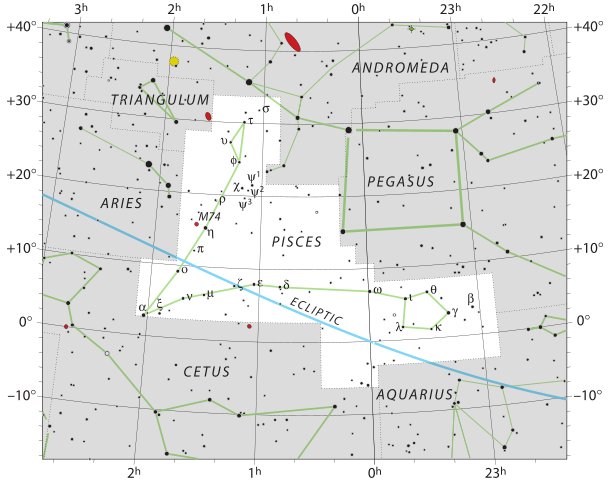 |
|
INVISIBLY CLOSE TO THE SUN: |
|
Sept 3 |
4 (64 + 183) |
5
(248) |
6 |
7 |
8 |
9 |
|
JULY 1 |
2 |
3
(248 - 64) |
4 (185) |
5
(3 + 183) |
6 |
7 |
|
ANA-TIPU-4
(Upper-side-pillar - where the
guards stood)
MERAK (Loin, not Lion) =
β
Ursae Majoris
(166.2),
DUBHE (Bear) =
α
Ursae Majoris
(166.7) |
11h (167.4)
χ
Leonis,
χ¹
Hydrae (167.1),
χ²
Hydrae (167.3)
*167.4 - *41.4 = *126.0 |
AL SHARAS (The
Ribs) =
β
Crateris
(168.6) |
Al Zubrah-9
(Mane) /
Purva
Phalguni-11 (First Reddish One - Fig
Tree)
ZOSMA (Girdle, not Belt) =
δ
Leonis
(169.2),
COXA (Hips) =
θ
Leonis (169.4)
*169.4 - *41.4 = *128.0 |
φ
Leonis (170.0),
ALULA
(First Spring of the Gazelle) =
ξ,
ν
Ursae Majoris
(170.5),
LABRUM =
δ
Crateris
(170.6) |
σ
Leonis (171.1),
λ
Crateris (171.6),
ι
Leonis,
ε
Crateris (171.9) |
γ
Crateris, π
Centauri (172.0),
κ
Crateris (172.5),
τ
Leonis (172.8)
GREDI (α Capricorni) |
 |

|
























